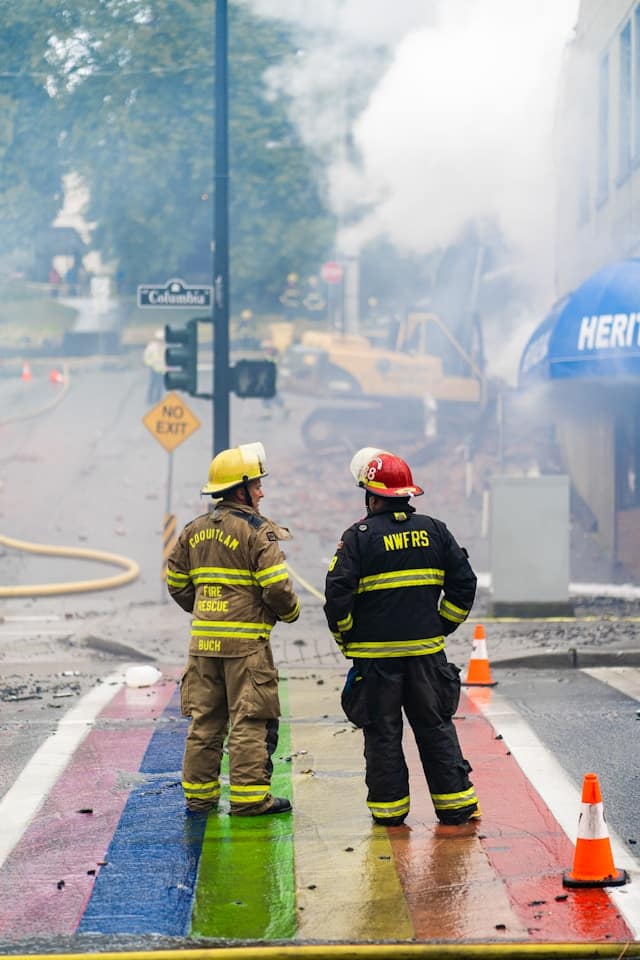In the ever-evolving field of firefighting, the advent of new technologies is paving the way for more innovative training methods. Virtual reality, a term once associated with cutting-edge gaming and immersive experiences, is now making waves in the realm of firefighting training. The real advantage lies in providing firefighters with an environment that mimics the unpredictable nature of real fires, without any of the risks involved. This article seeks to explore how virtual reality simulations can help train UK firefighters for complex situations, focusing on the technology, the experience it provides, and the tools it offers for improved learning.
The Role of Virtual Reality in Firefighter Training
The application of virtual reality in firefighter training systems is not just about flashing lights and high-definition graphics. It’s about creating an immersive, realistic scenario that enables firefighters to experience the unpredictable nature of fire control. These systems will give trainees an opportunity to tackle fires in a controlled environment, learn from their mistakes, and continually improve their approach.
Dans le meme genre : Unveiling the truth about male enhancement pills
The key to such a technology is the creation of scenarios as close to reality as possible. A large part of firefighters’ training involves understanding the behaviour of fire, its speed, and the way it interacts with different materials. Virtual reality enables the creation of such environments, allowing firefighters to study the dynamics of fire in various contexts, whether it be a residential house, an office building, or a forest.
The User Experience in Virtual Reality Training
Another aspect that virtual reality brings to firefighting training is the user experience. The ability to interact with the environment, use firefighting tools, and experience the physical sensations associated with controlling a fire hugely enhances the learning process.
Sujet a lire : How to Build a Personal Brand on Social Media as a UK-based Artist?
With virtual reality, a firefighter can feel the heat on their skin, the weight of the hose, and the force of the water as it fights against the flames. These sensations are not just for immersion; they mimic real-world conditions, giving firefighters an authentic training experience that prepares them for the rigours of their job.
Empowering Firefighters with VR Tools
Virtual reality also equips firefighters with a range of tools that they can use for training. These tools are not merely replicas of their real-world counterparts, but are designed to simulate their functionality in a realistic way.
For instance, a virtual reality training system might include a fire hose that the user can operate, a thermal imaging camera to detect hidden fire sources, or even a fire extinguisher for them to use in different scenarios. The experience of using these tools in a virtual environment gives firefighters a hands-on training experience that is difficult to replicate in traditional learning scenarios.
Using VR Systems for Firefighting Scenarios
The flexibility of virtual reality systems makes them ideal for creating a variety of firefighting scenarios. Whether it’s a raging inferno in a multi-story building, a forest fire spreading rapidly, or a residential fire with trapped occupants, VR can simulate these situations with a high degree of accuracy.
An important aspect of firefighting is the ability to adapt to different scenarios, and virtual reality can play a significant role in this. By providing a range of different situations, VR training can help firefighters understand how to adjust their strategies, make quick decisions, and ultimately save lives.
The Future of Firefighter Training with Virtual Reality
Looking ahead, virtual reality will undoubtedly play a crucial role in the future of firefighter training. As technology advances, these systems will become even more realistic and immersive, providing an unparalleled training experience. Furthermore, the ability to record and analyse training sessions in a virtual environment will enhance the learning process, allowing firefighters to review their actions, identify areas for improvement, and continually refine their skills.
While traditional training methods have their place, there is no denying the potential of virtual reality in the field of firefighting. With its ability to simulate real-world scenarios, provide an engaging user experience, and offer a variety of training tools, virtual reality holds the promise of revolutionising firefighter training in the UK and beyond.
Augmented Reality: Complementing Virtual Reality in Firefighter Training
In addition to virtual reality, augmented reality is another transformative technology that has significant implications for firefighter training in the UK. Augmented reality, unlike virtual reality, which creates a completely virtual environment, overlays digital information onto the real world. This mixed reality approach provides a unique training experience, allowing firefighters to interact with both real and virtual elements in their training environment.
Leading the charge in this space is FLAIM Systems, which has developed an augmented reality firefighter training system known as the FLAIM Trainer. This system uses VR technology to simulate the visual and auditory experience of firefighting, and pairs it with a haptic feedback suit that simulates physical sensations such as heat and recoil from a fire hose.
What sets the FLAIM Trainer apart is its integration of augmented reality elements. The system includes a real fire hose and branch that firefighters can handle, providing a more realistic and hands-on training experience. It also uses a thermal imaging camera that overlays thermal images onto the VR environment, exemplifying the innovative ways in which augmented reality can enhance firefighting training.
By combining virtual and augmented reality, FLAIM Systems is enhancing the user experience in firefighter training. The FLAIM Trainer has already been adopted by several fire services in the UK, including Leicestershire Fire and Rescue Service, whose watch manager, Paul Speight, has lauded the system as a cost-effective method of providing realistic and safe training scenarios.
The Impact of Virtual and Augmented Reality on Fire Rescue Training
The adoption of virtual and augmented reality technologies in firefighter training is not just an interesting trend – it’s a game-changing advancement that has the potential to dramatically improve the effectiveness of fire rescue training. By creating realistic, immersive environments, VR and AR technologies allow firefighters to practise their skills in a safe and controlled setting, while still experiencing the intensity and unpredictability of real-life fire situations.
One of the key benefits of using these technologies in firefighter training is that they provide an opportunity for firefighters to experience challenging and complex scenarios that would be too dangerous or costly to recreate in the real world. In doing so, these technologies are enabling firefighters to learn and adapt to a wider variety of situations, thereby equipping them with the skills and experience they need to handle any situation they might face in their line of duty.
Furthermore, virtual and augmented reality technologies provide a more engaging and interactive training environment compared to traditional methods. Firefighters are no longer passive learners; instead, they are active participants in their training, making decisions, solving problems, and learning from their actions in real-time.
The incorporation of these technologies into fire rescue training is also proving to be a cost-effective solution. By reducing the need for physical resources and eliminating the risks associated with live fire training, VR and AR technologies can deliver quality training at a fraction of the cost.
Concluding Thoughts
The integration of virtual and augmented reality technologies into firefighter training is revolutionising the way firefighters in the UK and around the world are trained. By providing an immersive, realistic training environment, these technologies are enhancing the quality of firefighter training, making it more engaging, effective, and safe.
While traditional training methods will continue to have their place, the potential of VR and AR technologies to transform firefighter training is undeniable. As these technologies continue to evolve and their adoption in fire rescue training becomes more widespread, it’s clear that the future of firefighter training lies in the digital realm.
In the words of Leicestershire Fire and Rescue Service’s Paul Speight, “Virtual reality and augmented reality technology is allowing us to do things we’ve never been able to do before. It’s an exciting time for firefighter training.” Indeed, it seems that the future of firefighting training is not just about mastering the flame, but also mastering the virtual and augmented realities that hold the key to enhanced learning and readiness.






